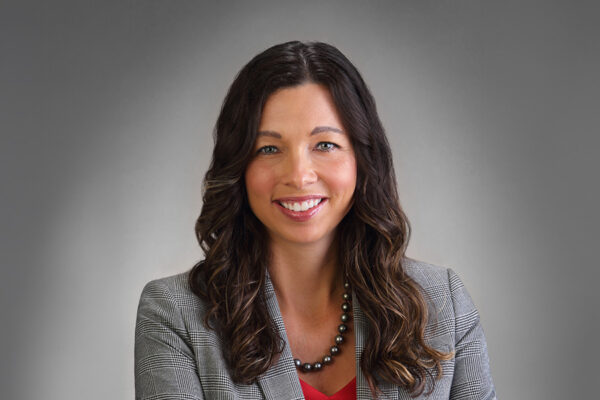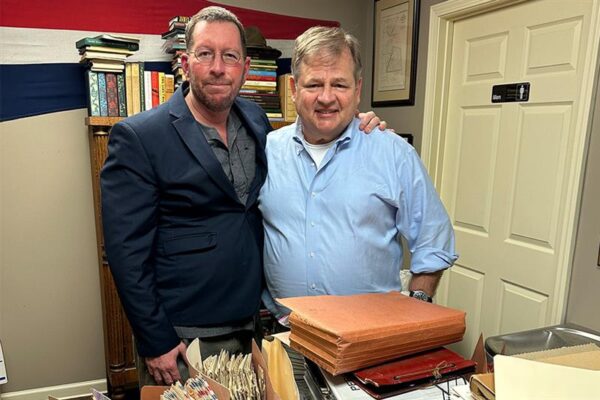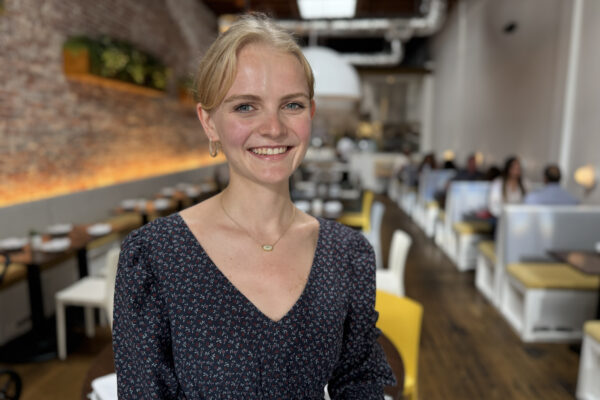
“Appalachia is a wound and a joy and a poem. A knot of complication.
But you cannot know a place without loving it and hating it and feeling everything in between.”
Silas House | Writer, Appalachian studies scholar
APPALACHIAN
AWAKENING
Documentarian Sally Rubin trains her lens on the shallow stereotypes of a region and ends up diving deeply into a whole new conversation.
By Dennis Arp
Photo by Challenge Roddie
Sally Rubin was determined to get to know Appalachia – to untie the knot and disentangle the misconceptions that attach themselves to the region. But first she had to find her way there.
“Appalachia is a construction, a social and cultural invention,” says Chad Berry, a professor of Appalachian studies at Berea College in Kentucky. “Iowa is a construction, too. The difference is that you know you’re in Iowa because there’s a sign there that says, ‘Welcome to Iowa.’ There’s no such sign with Appalachia.”
Berry is among those interviewed in Rubin’s new feature-length documentary “hillbilly.” In researching and shooting the film, Rubin not only found that perceptions of Appalachia are a timely subject for exploration. She learned that Appalachia itself is amorphous, evolving and more diverse than she, and certainly America, might ever have imagined.
“At first, we set out to do a historical survey of the development of the hillbilly stereotype in film and TV,” says Rubin, an assistant professor of documentary film at Chapman University. “Then, several months in, we came to realize that if this film is going to be about what Appalachia isn’t, we have to tell what Appalachia is. That’s when we started including the alternative Appalachian perspective.”
A journey of more than four years is bound to provide twists and turns along the way. This project had plenty, including one the filmmakers didn’t see coming.
“The results of the (2016 presidential) election changed the entire context of the film and how we told the story,” said Rubin, who co-directed “hillbilly” with Kentucky native Ashley York, who now lives in Los Angeles and teaches at the USC School of Cinematic Arts. “We always thought the film would be relevant, but suddenly it went from niche-relevant to nationally relevant.”
Toward the end of production, the filmmakers realized they needed a throughline to link all of the story’s themes. So York, who like Rubin is committed to social justice and a feminist approach in her filmmaking, stepped before the cameras to become a character in the film. Weaved throughout are scenes in which York reconnects with her Appalachian family members who attended rallies and voted for President Trump. These nuanced, sometimes tense but always loving conversations add intimacy and urgency to the film.
In one scene, York visits her Granny Shelby in Jonesville, Ky. They trade hugs as they’re joined by several other family members who had voted for Barack Obama but now wear MAGA hats. York eases into the role of neutral interviewer as she probes their enthusiasm for Trump. “People from the mountains,” she hears, “really had no one to have our back before.” There’s a long pause while York nods awkwardly, and then the inevitable question: “Who’d you vote for?” She purses her lips and reveals that she voted for Hillary Clinton.
“I must not have burped you girls just right,” her grandmother deadpans. “I should have held you upside down and patted you on your butt.”
Frustrated by Hypocrisy
For Rubin, the filmmaking journey connects to the roots of her mother, who grew up in Calderwood, Tenn., in the Great Smoky Mountains. The filmmaker also knows coal country from her 2010 film “Deep Down,” which chronicles friendships and divisions as a way of life erodes in eastern Kentucky.
“From the time I was younger, I’ve been frustrated by the hypocrisy and stereotypes around rural white people,” says Rubin. “Growing up in liberal Boston, those in my circle wouldn’t be caught dead saying the N word or anything like that, but they would very happily throw around terms like redneck, hillbilly and poor white trash. I noticed that, and it pissed me off.”
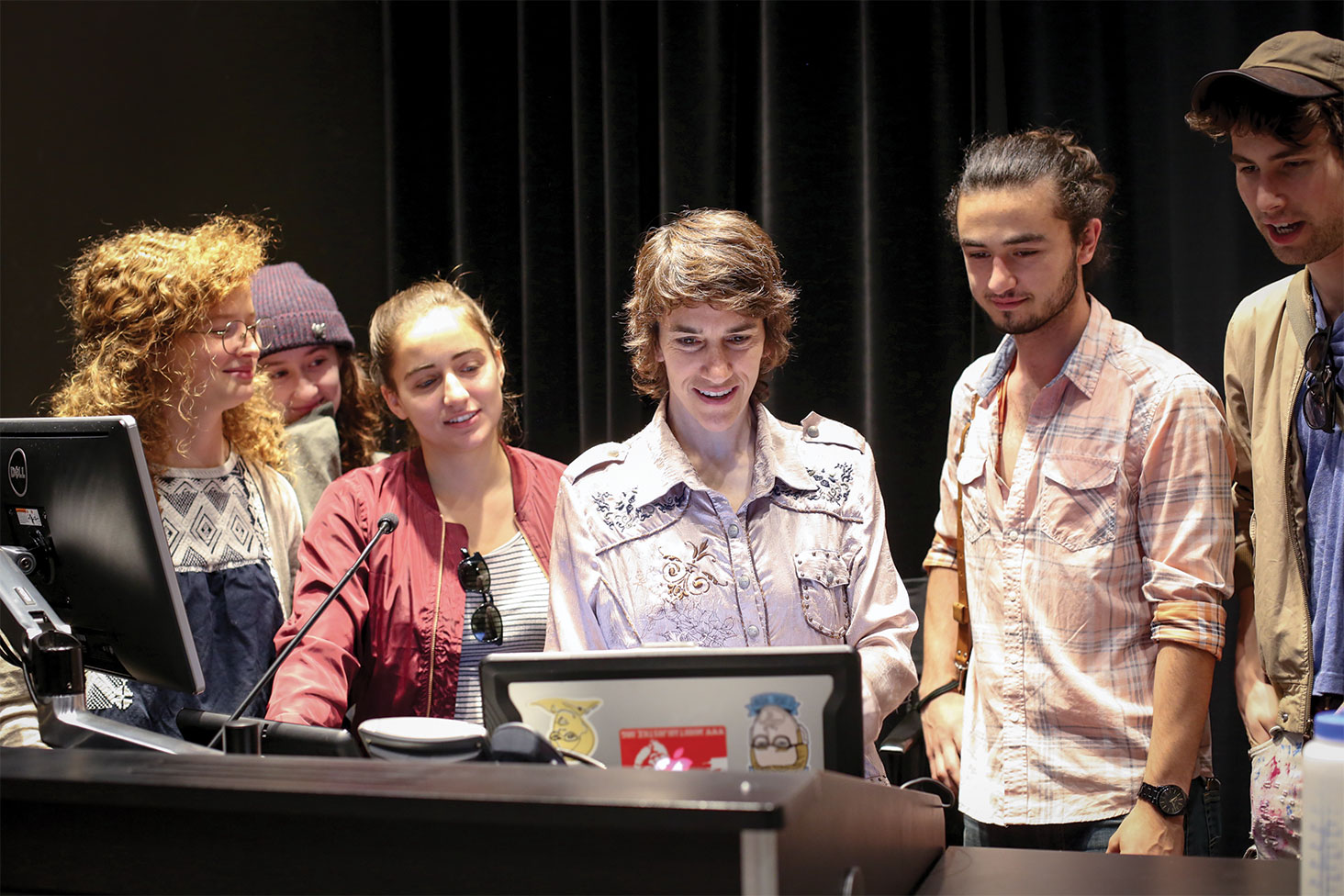
Sally Rubin and her Chapman documentary film students discuss a scene from “hillbilly.”
Rubin’s pop-culture flashpoint for the project was the character Pennsatucky on the Netflix series “Orange Is the New Black.”
“It’s this innovative show, with risky storytelling and gender-nonconforming characters, and at the same time there’s this character who’s a tired old mashup of every stereotypical quality of an Appalachian person – holy roller, meth head, abuser of the welfare system,” Rubin says. “For me, it was ‘enough is enough.’”
Once York came onboard as a partner in the project, the two launched into a review of scholarly research.
“There’s a huge body of scholarship on the history of Appalachian identity and representation,” Rubin says.
Key texts include “Hillbilly” by Tony Harkins and “Hillbillyland” by Jerry Williamson. “Ashley and I practically memorized those texts,” says Rubin, who adds that “Belonging” by Bell Hooks also was enlightening. “It’s all about Southern and Appalachian identity, especially from the vantage point of a woman of color who left and then came back. It helped me look at the region in a new way.”
In March 2014, the filmmakers attended the annual Appalachian Studies Association Conference, where they met and interviewed a host of key scholars.
“Every single scholar we interviewed became an advisor on our film,” Rubin notes.
The Road to a Gripping Story
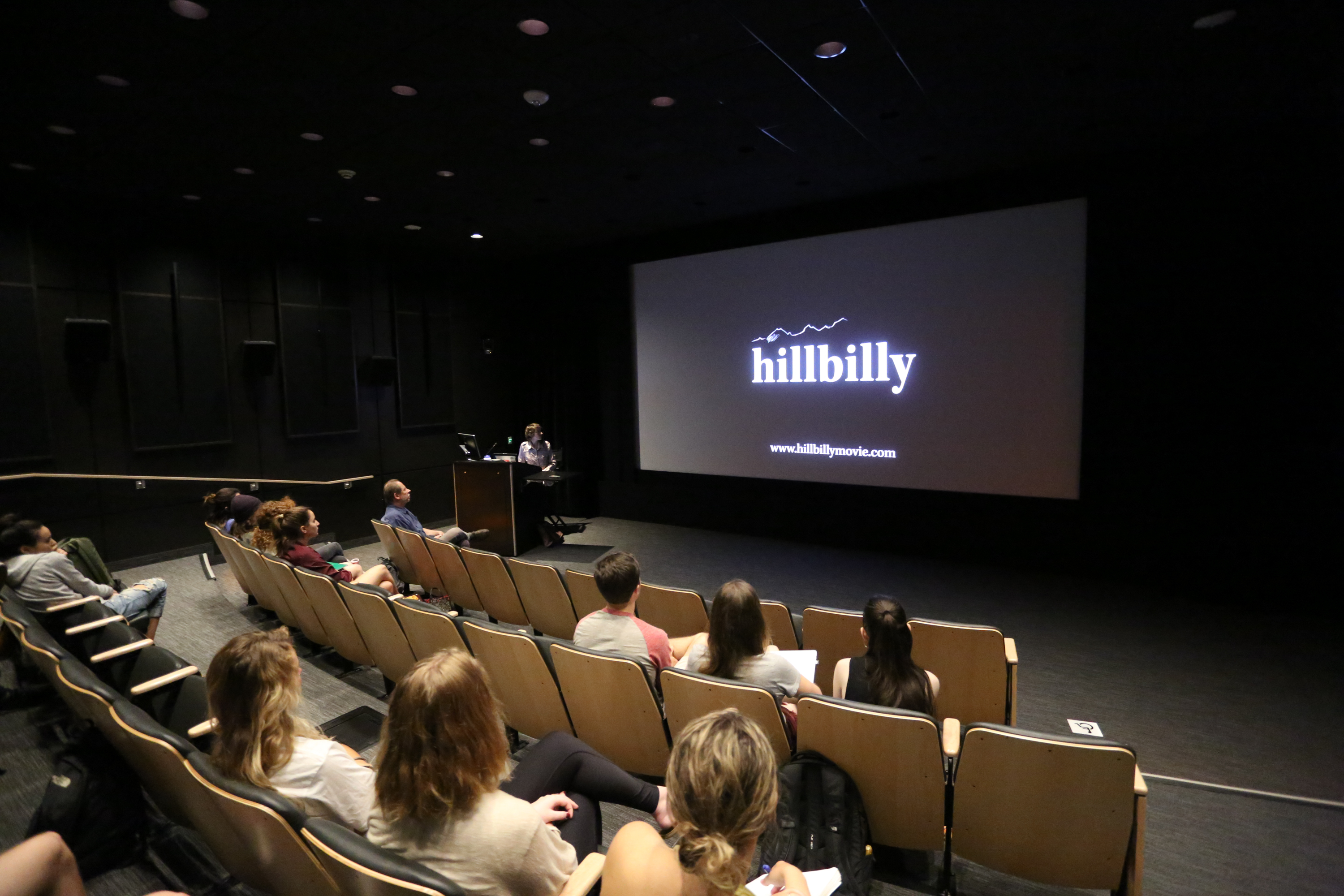
Rubin shares insights with students and with Andre Dhont in the Dhont Documentary Film Center of Chapman Studios West.
Rubin’s research goals were twofold: “Making sure we have a wide, diverse and thorough handle on the concepts of the film, and then deciding, ‘Is this going to make a compelling story?’”
Validation came in the form of outside funding from state humanities councils in South Carolina, Virginia, Ohio, Kentucky and West Virginia. Later “hillbilly” earned two major grants from the National Endowment for the Arts and one from the National Endowment for the Humanities.
That support allowed the filmmakers to gather stories during field research trips that crisscrossed six states. “We knew we needed media clips, and we knew we needed experts talking about what we were seeing in the media clips. But we also wanted stories, so we sought out characters who could bring the human element to the film,” Rubin says.
In addition to Billy Redden, the actor who portrayed the banjo player in “Deliverance’’ (and now a Walmart worker in Georgia), “hillbilly” gives voice to artists and activists, queer musicians and “Affrilachian” poets – the flipside of the hackneyed regional stereotypes.
“I’m happy to see somebody trying to cover us as we really are and not what some people think we are. It’s wonderful the attention you’ve paid to so many areas that are so important to all of us. I’m proud to have been mentioned in the film a time or two. “
“I’m very proud that we were careful to showcase the diversity of the region,” says Samantha Cole, a native of Lee County, Ky., who was interviewed for the film and eventually took on the role of associate producer. “I had known for some time that Appalachia was home to all these different folks, but all those narratives had been buried, shut down.”
Cole has helped the filmmakers develop a companion piece to “hillbilly” called
“Her Appalachia,” which shares interviews with women of the region and takes a critical look at female Appalachian archetypes like the “mountain mawmaw,” “sex pot” and “freeloader.”
“The film is surprising and refreshing, treating white rural voters generously and expanding cultural understanding of the region. … For outsiders, the film could potentially challenge viewers’ perceptions; for Appalachians, it’s a cinematic portrayal of which they can be proud.”
“The diverse nature of the region had been at the periphery of my thoughts,” Cole says. “Now I want to seek out those diverse voices that are of and for the region.”
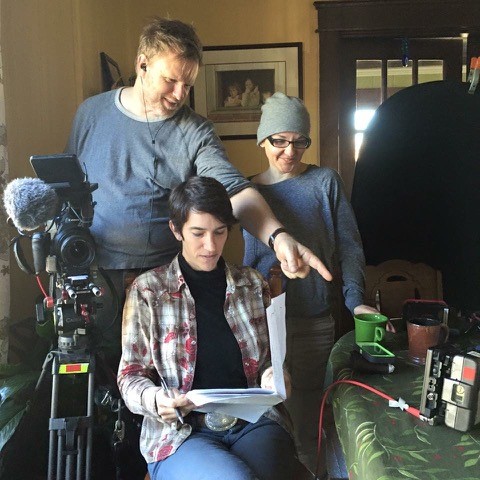
Cinematographer Bryan Donnell and co-directors Rubin, seated, and Ashley York traversed six states shooting scenes for “hillbilly.”
When Rubin first reached out to her about a possible on-camera interview more than four years ago, Cole didn’t imagine the journey that would result, including her writing proposals and securing grants.
“Sally was fabulous to work with,” Cole says. “She provided this big overarching picture, but she was also attentive to details. She’s a great artist and creative thinker, but also a fantastic teacher.”
Cole was there when “hillbilly” premiered in May at the Nashville Film Festival, where attendees filled a 250-seat theater and a 115-seat spillover venue as well. Cole saw filmgoers “connect with the story and afterward say that they had never seen anyone express the same thoughts and feelings they had been holding in for years.”
“It’s like we’re empowered to have pride in the place we call home,” Cole adds. “This film not only invites conversations but deep thinking about the media we consume – in terms of the hillbilly figure yes, but also any minority or oppressed group.”
Rubin says she’s eager to see “hillbilly” prompt conversations in family rooms and over kitchen tables, but also in group forums and classrooms, perhaps even after a screening on Capitol Hill.
“Hopefully the film will live in the world for decades and have a broad impact,” Rubin says. “My dream would be that we would see less vitriol between people from urban and rural backgrounds. The film has universal themes and offers a lot to unpack, so it lends itself to rich conversations. I’d like to see all of those continue.”
